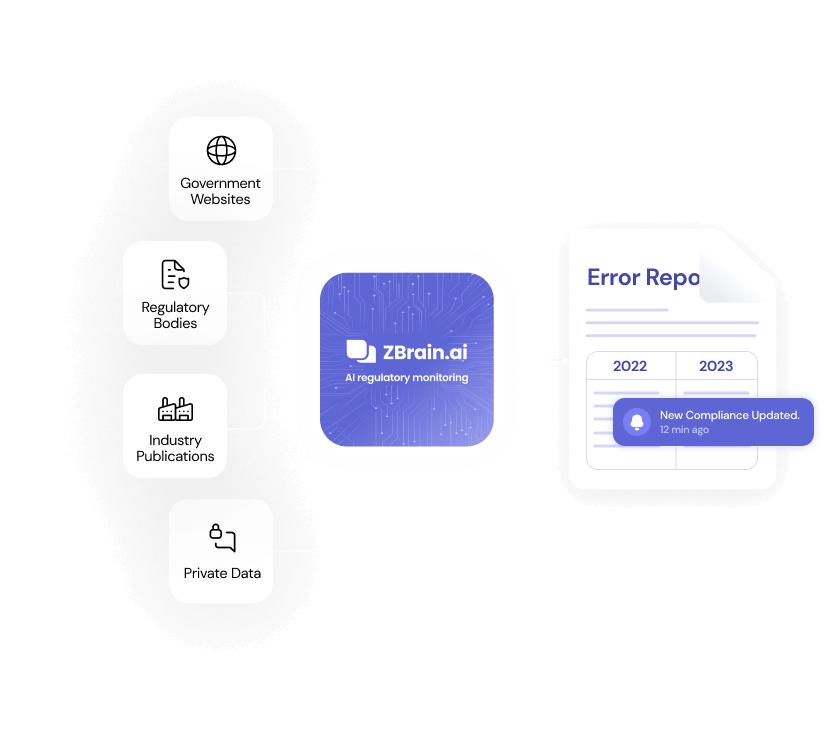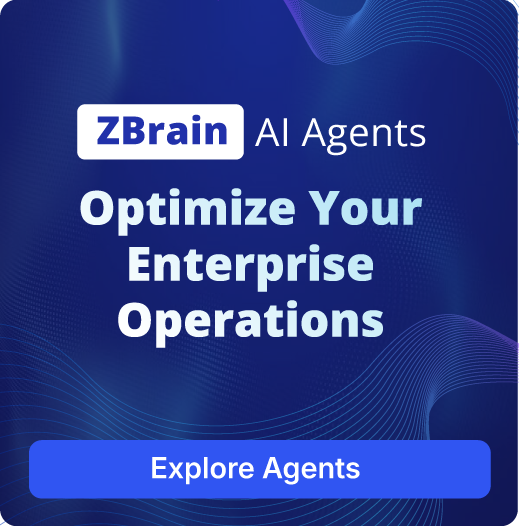AI-based Regulatory Monitoring Tool
ZBrain’s AI regulatory monitoring tool offers comprehensive real-time insights into regulatory changes. Equipped with an alerting mechanism and other robust features, the tool enables users to stay informed about changes in regulations relevant to their industry, mitigating compliance risks and ensuring operational continuity.

Trusted By Leading Enterprises
Features of Our AI-based Regulatory Monitoring Tool
Real-time Monitoring
Our AI tool continuously monitors regulatory developments across diverse sources, including government websites, major news sites, regulatory bodies and industry publications.

Customized Alerts
When the tool identifies regulatory changes, it promptly notifies users of the updates through its customizable alerting mechanism.
Automated Analysis
Comprehensive Reporting
Benefits of Our AI-based Regulatory Monitoring Tool
Proactive Compliance Management
The tool facilitates proactive compliance management by automating the regulatory monitoring process, reducing the risks associated with non-compliance.
Time and Cost Savings
Our tool saves time and resources by eliminating the need for manual tracking and analysis of regulatory updates, allowing organizations to focus on core business activities.
Improved Accuracy
It minimizes the risk of errors associated with manual tracking and interpretation of regulatory changes, ensuring the accuracy and reliability of compliance efforts.
Enhanced Decision-making
Our regulatory monitoring tool provides timely and relevant insights into regulatory developments, enabling informed decision-making and strategic planning.
Our Partners
Industries We Serve
Financial Services
Healthcare
Technology
Manufacturing
Real Estate
Government and Public Sector
Retail and Consumer Goods
Legal and Consulting
Don’t wait for regulatory changes to impact your business. Start your journey towards compliance excellence with our AI regulatory monitoring tool.
Frequently Asked Questions
How is AI used in regulatory compliance?
AI is utilized in regulatory compliance to automate and enhance the monitoring and analysis of regulatory changes relevant to specific industries. By employing advanced techniques, including Natural Language Processing (NLP) and machine learning, AI tools continuously scan multiple sources, such as government websites, regulatory body websites, major news outlets, and industry publications. These technologies identify and categorize regulatory updates based on their relevance and impact, enabling organizations to proactively manage compliance with precision and efficiency.
Is there a regulatory body for AI?
Currently, there is no universal regulatory body to oversee AI. However, AI regulations and guidelines are typically set and monitored by industry-specific regulatory bodies and national or international authorities, depending on the application of AI. For instance, in healthcare, AI applications might be regulated by bodies like the FDA in the United States, while general AI policies could be overseen by governmental agencies tasked with data protection and technology, such as the European Union’s Artificial Intelligence Act.
How can AI help with regulatory compliance?
AI enhances regulatory compliance by providing organizations with tools to monitor and adapt to regulatory changes effectively. By automating the tracking of updates and changes, AI reduces reliance on manual processes and minimizes non-compliance risks. It delivers real-time alerts and insights into regulatory trends and potential risks, enabling companies to maintain operational continuity, manage compliance proactively, and make informed decisions. Products like ZBrain’s AI-based regulatory monitoring tool exemplify these capabilities, helping businesses align with both current and upcoming regulations.
What is an AI monitoring system?
An AI monitoring system is a platform or tool that leverages artificial intelligence to continuously observe and analyze specific data or environments. It employs machine learning and Natural Language Processing (NLP) to evaluate information relevance and impact. These tools are pivotal in various applications, including regulatory compliance, where these identify and interpret changes in regulations, ensuring decisions are informed, timely, and compliant.
